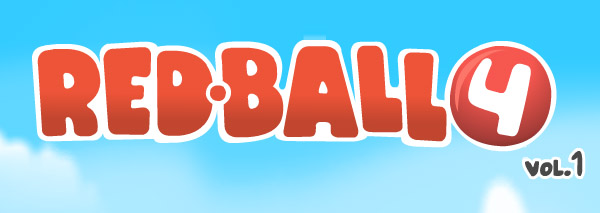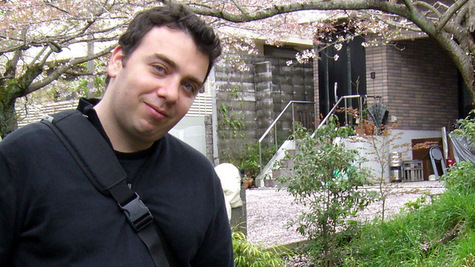RedBallStudio is a one-man studio based in Saratov, Russia. Founded in 2009 by Eugene Fedoseev, the studio publishes Flash and iOS physics platformers about their main character – Red Ball. There are seven games about Red Ball in the studio’s portfolio, but Fedoseev continues to publish more Red Ball games in the future.
From selling concrete mixers to game development
My educational background is in programming, but after I finished university I worked as sales clerk selling concrete mixers. I wasn’t interested in programming at that time – it seemed a little boring to me. One day at the end of 2008, while I was at work, a friend sent me a link to a blog. On this blog a guy shared his experience of how he earned money making flash games. I was really surprised because I thought making games was very difficult and could only be achieved with a big team. I’ve read the entire blog that day and after work I went to a bookshop and bought a book about ActionScript 3.0. It took me two weeks to read the book and I started making games while at work and at home afterwards. My first two simple puzzle games were Fastone Pyramid and Rain Drop.
I gained a lot of experience in game development, working with Action Script 3 and communicating with sponsors, but not a lot of money. I realized I really enjoyed creating games, but I could not afford to quit my daytime job.
While reading lots of different tutorials on the internet I found a tutorial on Platform game basics using Box2D. It allowed the player to control a red box and let it interact with physics in the game world. I got very excited and started playing with it. I added different objects and obstacles, unlocked box rotation and finally found out that the box’s body is difficult to control. To fix this I decided to change the box to a ball, thus creating Red Ball in the spring of 2009. Initially I created seventeen levels and added different objects, platforms and flags. I drew the graphics myself, my wife found a great musical soundtrack and after 3 months we released the game. After a while I got a really good offer from King.com and decided to quit my job to become an indie flash developer. Since then I’m working at home, full-time. The past four years I’ve created different games about Red Ball on different platforms (Flash and iOS). I created Red Ball 2, Red Ball 3 and finally Red Ball 4 at the end of the last year. Next to that I’ve created the Red & Blue Balls series (three chapters) where you control two balls - switching between them. With every game I aim to improve the quality by hiring art designers, add story animation instead of comics and improve the user interface. I couldn’t say it better myself then what JayIsGames.com wrote about the Red Ball series progress.
Finding inspiration
The main focus in my games is game- and leveldesign. The seven Red Ball games count a total of over 100 levels. My inspiration for these levels came from some great games I played on the internet. For example, the buttons and levers in Red Ball 3 are inspired by Fireboy and Watergirl. Another game, Lee-Lee’s Quest 2 inspired multiple aspects of Red Ball 4. I really like the popular iPhone game Doodle Jump which is why I wanted to add a parody-level in Red Ball 3. The gears in Red Ball 4 are something I added after spending quite some time on a physics learning tool called Algodoo.
Other things in my life inspire me as well. On a vacation to Egypt I visited the pyramids (as seen in Red Ball 3) and I came up with the helicopter level after I was given a RC helicopter for my birthday. Wikipedia articles about different mechanisms also always inspire me to create new things.
Level design
Each level in the series goes through three different stages of development. First I draw some level challenges with a pencil and sketchbook. This part of the process takes about 50% of the time. The fun part about this stage in development is that I can do this wherever I want. Sometimes I work at a café, the beach or while traveling.
After that I combine different challenges into one level and sketch a background layer in Flash. Then I outline my sketch with simple primitives and create the level’s physics. This stage requires a lot of gameplay testing to see if challenges need to be changed. For example, a gap could be too big to jump over or some challenges could be very hard to pass.
This level is playable but it still needs some nice aesthetics. For this last stage in development I send these levels to my artist.
The benefits of working with sequels
I’m really happy to be able to create games, it gives me both satisfaction and financial profit. The last four years I’ve created seven games about Red Ball and I’m not planning to quit anytime soon. The benefit of making sequels is that both players and sponsors know your games and want to play / buy them. Over time you create a fan base that follows your projects. For example; Red Ball 3 has doubled the results of Red Ball 2 when it was played 60 million times in the first year after launch. Sponsors also know what to expect from your games. As a result you get more profit. For example; I got twelve times more profit from Red Ball 4 then from the initial Red Ball.
Another benefit of working with sequels is that you can save a lot of time and increase your production efficiency when you don’t have to create game from the beginning. You can simply add new levels to your game engine. That’s how I’m currently working on developing Volume 2 of Red Ball 4. It will be the same red ball character with the same physics, but I’m adding fifteen new levels.
After completing Volume 2, Fedoseev plans on creating a Volume 3. His motivation is to provide the fans of the Red Ball series with a lot of levels to play in the future. The studio is currently working on a website where you can follow their progress; www.redballstudio.com.


 Game director Johan Peitz had the initial game design responsibility. This was during the early phase of the production, where the game had to have the “Icy Tower feeling”, something Johan has a unique sense for. Shortly after we completed a good version of the core game play, Johan had a son. This meant he was leaving us for more than a month in a critical stage of development: fine tuning the gameplay and evaluating new features. Luckily game designer Jimmy Öman jumped in to take over where Johan left off.
Game director Johan Peitz had the initial game design responsibility. This was during the early phase of the production, where the game had to have the “Icy Tower feeling”, something Johan has a unique sense for. Shortly after we completed a good version of the core game play, Johan had a son. This meant he was leaving us for more than a month in a critical stage of development: fine tuning the gameplay and evaluating new features. Luckily game designer Jimmy Öman jumped in to take over where Johan left off.









